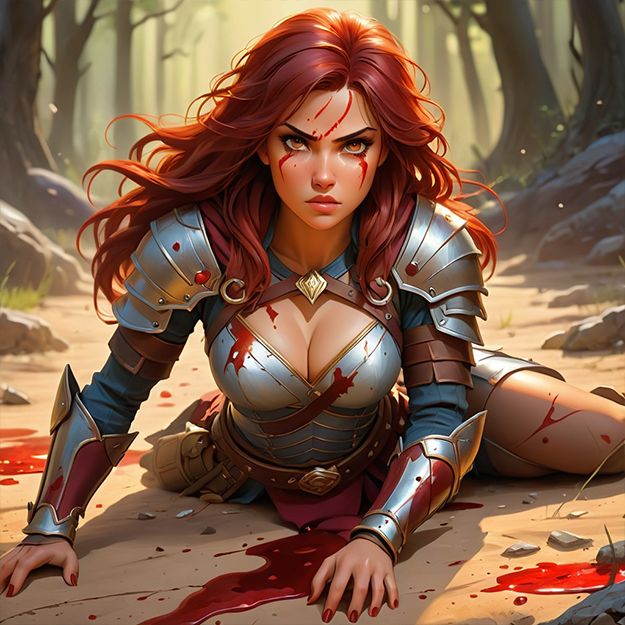
Resilience
Resilience represents how your character handles damage to different body parts and manages the healing process.

Top Down Token
Right click on image to download PNG

Hp and Damage
When an opponent sustains damage, it is deducted from their hit points. A person’s hit points are allocated across different body parts, resulting in the corresponding body part being affected by the subtraction.
The total number of hit points a person has is determined by their race and history This number remains constant and do not progress over time, it can only be healed up to its total value. These hit points are then divided into six parts: head, torso, arms, and legs. The percentage ratio for each body part is determined by the game master’s HP-bodylist.
When a specific body part’s hit points drop to zero, it becomes unusable. While some body parts, like limbs and the torso, can be restored, the head is an exception; if its hit points reach zero, the individual is permanently dead unless revived through magic. For limbs, if their hit points are reduced to zero a third time before they are fully healed, the limb is permanently lost. Similarly, if the torso loses all hit points a third time without complete healing, the person will die. This rule applies to all body parts that lose all HP a third time before fully recovering. To revive an individual, their injuries must be treated either through medical procedures or with the use of spells.
Hit points are divided into distinct segments, with each corresponding to a specific body part. For a medium humanoid, the division is as follows:
HEAD: 15% – When down to zero you are dead
TORSO: 35% – When down for the third time you are dead
RIGHT ARM: 10% – When down for the third time the limb is lost
LEFT ARM: 10% – When down for the third time the limb is lost
RIGHT LEG: 15% – When down for the third time the limb is lost
LEFT LEG: 15% – When down for the third time the limb is lost
When dividing your HP, adjust the numbers to the nearest whole numbers and ensure that the sum total remains equal to your total HP.
Armor
Aside from employing special maneuvers, you have the option of donning armor or amulets for your protection. These come in various forms such as regular armor, magic armor, spells, and amulets.
It’s important to note that even if you possess strong defense through multiple amulets, it doesn’t necessarily imply that your enemy lacks ways to counteract it. Info on armor is here >>>
Spells
Healing
This guide provides a overview of these conditions, spanning from minor afflictions to more substantial wounds.
Damage Levels:
When your health is compromised, understanding the stages of healing becomes crucial. Below, we explore the continuum of damage levels and their respective recovery paths.
Under 80% Damage:
Untreated: 15% recovery per day
Treated (Regular Mending): 25% recovery per day
Treated (Skill Traits): 30% Medical savingthrow per day
Magical healing restores hit points according to the spell’s healing power but can cause harm if used offensively.
You can either simplify it by adding the percentage of hit points to your total after each night of rest, or, if you prefer a more detailed approach, divide the daily hit point recovery by 24 to regain hit points per hour.
CONSTITUTION
After determining the percentage of healing based on the treatment, you need to adjust it according to the character’s race. For example, if a dwarf heals at a rate of 15% per day for an untreated wound, an orc, with a modifier of 0.8, would recover 15 * 0.8 = 12% per day.






